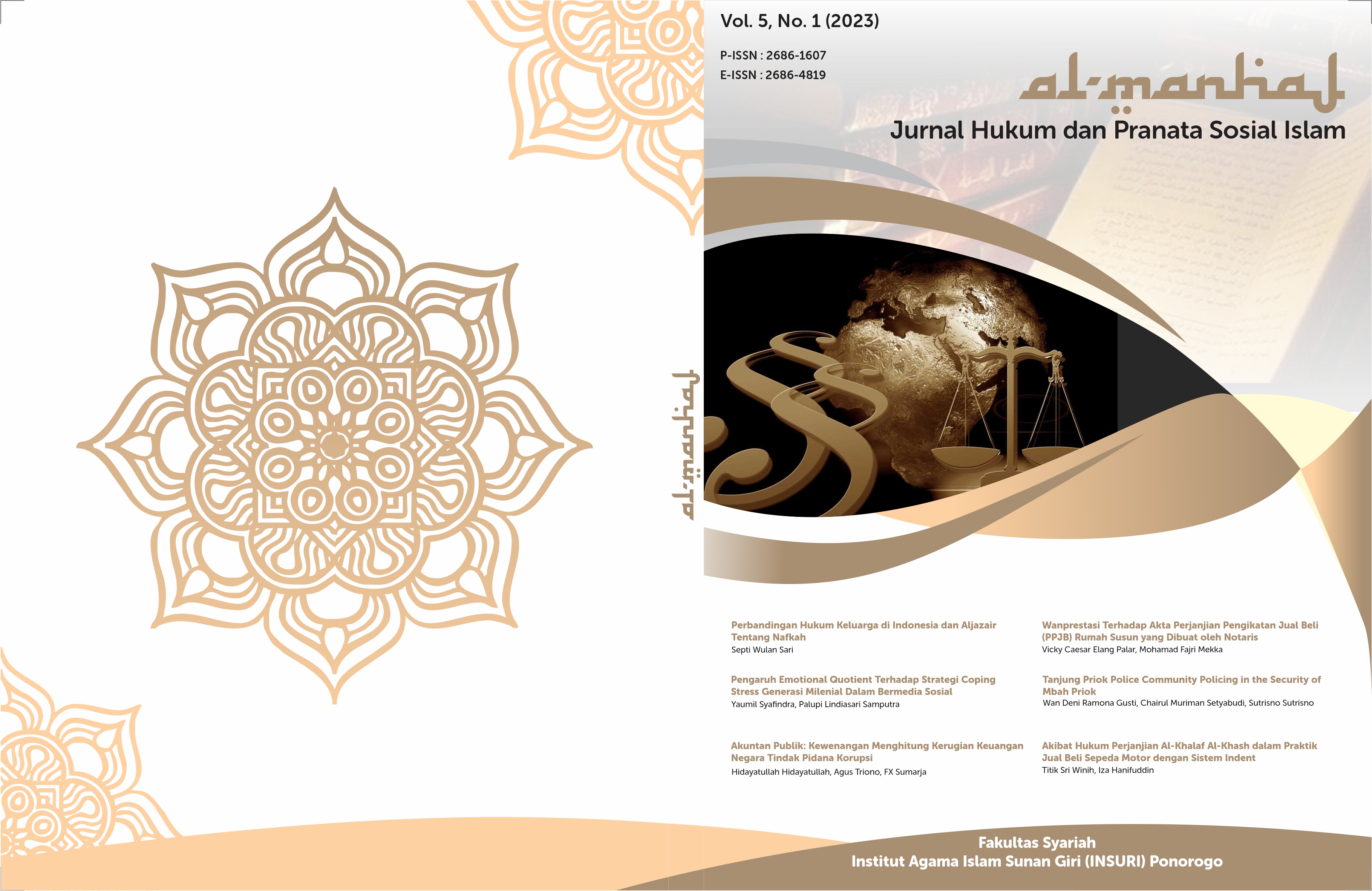Perlindungan Hukum Seorang Anak Sebagai Pemohon Dispensasi Kawin Pasca Revisi Undang-Undang Perkawinan
DOI:
https://doi.org/10.37680/almanhaj.v5i1.2403Keywords:
Child; Marriage Law; Marriage DispensationAbstract
In general, those who apply for a marriage dispensation are the parents or guardians of the child as in Article 7 paragraph (2) of Law No. 16 of 2019 concerning Amendments to Law Number 1 of 1974 concerning Marriage, when the petitioner are often minors where they are legally incompetent. This study aims to find out how the legal protection of minors as a marriage dispensation petitioner after the revision of the Marriage Law and the judge's efforts in determining the marriage dispensation application where the Petitioner is a child. The research method used is a normative juridical approach with library research data collection techniques from secondary data and field studies using interview techniques from primary data. The results of the study indicate that legal protection for minors as petitioner for marriage dispensation after the revision of the Marriage Law has not been maximized because there is still a legal void, it is necessary to make written rules from the government that can guarantee legal certainty. Efforts that can be made by judges to determine cases of this kind are judges making legal discoveries while still prioritizing the best interests for children.
References
Darmadi, S. (1998). Kedudukan Ilmu Hukum dalam Ilmu dan Filsafat. Bandung: Mandar Maju.
Faida Hilyasani, A. M. (2022, Desember). Dispensasi Nikah: Analisis Kontemporer Dimensi Pernikahan Dini Menurut Berbagai Aktor di Kabupaten Bantul D.I Yogyakarta. Al-Manhaj: Jurnal Hukum dan Pranata Sosial Islam, 4(2), 149.
Harahap, Y. (2016). Hukum Acara Perdata tentang Gugatan, Persidangan, Penyitaan, Pembuktian dan Putusan Pengadilan. Jakarta: Sinar Grafika.
Jawad, H. A. (2002). Otentisitas Hak-hak Perempuan: Perspektif Islam atas Kesetaraan Jender. Yogyakarta: Fajar Pustaka Baru.
Marzuki, P. M. (2008). Pengantar Ilmu Hukum. Jakarta: Kencana Prenada Media Group.
Mertokusumo, S. (2010). Mengenal Hukum Suatu Pengantar. Yogyakara: Cahaya Atma Pustaka.
Mertokusumo, S. (2014). Penemuan Hukum. Yogyakarta: Cahaya Atma Pustaka.
Mulyadi, W. (2017, Juli-Desember). Akibat Hukum Penetapan Dispensasi Perkawinan Anak di Bawah Umur (Studi Kasus di Pengadilan Agama Pacitan). Privat Law, V(2).
Munadhiroh. (2016, Maret). Kajian Hukum Terhadap Permohonan Dispensasi Kawin Pada Perempuan di Bawah Umur di Pengadilan Agama Semarang (Studi Kesehatan Reproduksi). Jurnal Idea Hukum, 2(1), 20.
Shidarta. (2006). Moralitas Profesi Hukum Suatu Tawaran Kerangka Berfikir. Bandung: PT Revika Aditama.
Soekanto, S. (2006). Pengantar Penulisan Hukum. Jakarta: UI Press.
Soemitro, R. H. (1990). Metodologi Penelitian Hukum dan Jurimetri. Jakarta: Ghalia Indonesia.
Subekti, T. (2010). Sahnya Perkawinan Menurut Undang-Undang Nomor 1 Tahun 1974 Tentang Perkawinan Ditinjau dari Hukum Perjanjian. Jurnal Dinamika Hukum, 10(3), 330.
Sunggono, B. (2003). Metodologi Penelitian Hukum. Jakarta: P.T Raja.
Susanto, N. A. (2014, Desember). Dimensi Aksiologis Dari Putusan Kasus “ST” Kajian Putusan. Jurnal Yudisial, 7(3).
Syahrani, R. (2013). Seluk Beluk dan Asas-Asas Hukum Perdata. Bandung: P.T. Alumni.
Yahyanto, L. S. (2016). Pengantar Ilmu Hukum. Malang: Setara Press
Downloads
Published
How to Cite
Issue
Section
License
Copyright:
- Author retains the copyright and grants the journal the right of first publication of the work simultaneously licensed under a Creative Commons Attribution 4.0 International License that allows others to share the work with an acknowledgment of the work's authorship and initial publication in this journal.
- Author is able to enter into separate, additional contractual arrangements for the non-exclusive distribution of the journal's published version of the work (e.g., post it to an institutional repository or publish it in a book) with the acknowledgment of its initial publication in this journal.
- Author is permitted and encouraged to post his/her work online (e.g., in institutional repositories or on their website) prior to and during the submission process, as it can lead to productive exchanges, as well as earlier and greater citation of the published work (See The Effect of Open Access).
License:
-
Attribution — You must give appropriate credit, provide a link to the license, and indicate if changes were made. You may do so in any reasonable manner, but not in any way that suggests the licensor endorses you or your use.
-
No additional restrictions — You may not apply legal terms or technological measures that legally restrict others from doing anything the license permits.
You are free to:
- Share — copy and redistribute the material in any medium or format
- Adapt — remix, transform, and build upon the material for any purpose, even commercially.

This work is licensed under a Creative Commons Attribution 4.0 International License.














